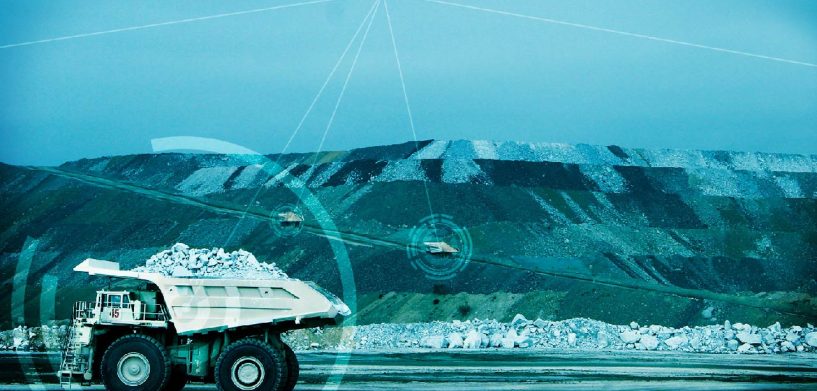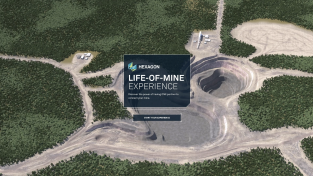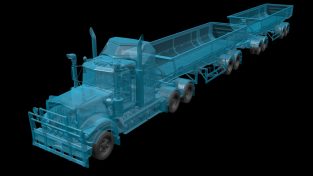BK: Welcome to HxGN Radio. My name is Brian, and today we have Carl Brackpool, Product Manager and Innovation Lead from Hexagon Mining, to discuss a new product: HxGN MineOperate Asset Health. Thanks for joining us, Carl!
CB: No problem, Brian. Nice to be here.
BK: Mines are digitising every aspect of their operations. But some companies still use paper maintenance logs for their large machinery. Machines fail prematurely without explanation. Asset Health from Hexagon is an enterprise-level platform that extends equipment life by converting sensor data into actionable information. So Carl, you’ve described the moving parts of a mine as a coordinated ballet. I love that. Describe what happens when one of these parts, a piece of heavy equipment, say, fails prematurely.
CB: Yeah, I’ve taken something that’s very precise and very delicate, and I put it in an underground mining world, which is incredibly harsh. Lots of heavy machinery. People are operating with those machines until we get to what’s called the mine of the future, which is fully autonomous. No humans underground. Completely safe, and they’re operating from a safe distance on the surface. But until we get to that point, I look at it as either a ballet, or let’s call it air traffic control. Essentially, you’re looking at things that are blind to you, and you’re hoping that the screens are giving you information at the dispatch center on the surface, or at the desktop level, or even somebody on a radio can’t see what’s going on underground, and you may have as many as 20 different sections working at any one time. So, 100 – 100 miners, 50 or 60 pieces of equipment, and you’re trying to coordinate all of that stuff.
Any one piece of equipment that fails, especially in underground mining, you have this problem where you can’t move it off to the side. There’s no room for passing lanes. For surface mining, it’s a little bit easier. We’re launching the product HxGN MineOperate Asset Pro around predictive analytics and the health of these machines, first in the surface world and then we’re going to go underground with it. So, on the surface we set out to do three things with this product, and that was to completely create the next generation of fleet management system in architecture. The second thing we wanted to do was build a data visualization. You know, the dashboard, the thing that – that you interact with, user experience and user interface, that was better than anything in the marketplace. And the third, which is the most amazing piece, is the predictive analytics using artificial intelligence and machine learning, which our data scientists are, I think are the best in the world over in Heerbrugg, Switzerland for Hexagon.
BK: Now, mines are paying for machines with far more sensors than ever before. But still some are still using paper maintenance logs. What are the opportunities being lost on these?
CB: Well there’s two things there. Obviously, if you’re using paper or Excel, that’s very archaic, little bit pedestrian, and the mining industry is not known for jumping ahead and trying new things because the margins are incredibly low for the volume of revenue that they make. And the cost of extracting material from the ground, especially at what you call low ore grades, very low percentages of your target material, your metal. So, if, say, you’re going after copper, and it’s only 3 percent of the rock, you have a lot of extra rock that you have to get rid of. And those are the things that are called tailings. So, in those situations where you have very lean margins, the mining industry historically is 5 to 10 years behind on innovation, in adoption. And what we’re trying to do is close that gap, and the manufacturers of these giant machines are adding more and more sensors because it’s in their best interest to have a piece of machinery that’s giving you information. You know, telemetry, like the space shuttle, is giving you information that you can look at and try to find a pattern that says, “I think that machine may fail early. What can I do as preventative maintenance before then?”
And back to that first point, you know, the first objective of building this was to create an architecture that was completely open using microservices, and that’s really where IoT is going, so we made this connection instantly with IoT, the sensored truck, everything’s connected onboard the truck, and every little minute instrumentation or instrumented thing onboard the vehicle is giving off some sort of data, and you just smash all that data together and eventually you’re going to start seeing patterns that your experience or the naked eye can’t see.
BK: Now, what does HxGN MineOperate Asset Health do for predictive maintenance?
CB: If you think about all the sensors on board a large piece of machinery – let’s take a haul truck, that’s the most common piece of machinery that’s constantly working and it’s traversing the greatest distance in an open pit mine, from the bottom of the mine over maybe even an hour to get all the way out to a dump, or a stockpile, or a processing plant. And these trucks are tens of millions of dollars, and there are as many as 6,000 sensors or data points on board these, and you would think the normal ones you look at are tire pressure, brakes, make sure the brakes work, hydraulic pressures, electrical systems. But there are so much more data coming off these machines: exhaust gas temperature, turbos, as well as all the environmental data, things that are off board that machine. You know, what time of day is it? What’s the barometric pressure? Is it raining? Is it not raining? We look at the CRM data and the human resources data. Is the operator brand new, just came out of training? Did that machine just come out of the maintenance bay? If you start stacking all that data together, you’re going to increase the amount of noise, but our data scientists are writing amazing algorithms that scrub away all that noise, and they get it back down to a very pure data set, and they start looking for anomalies, things that – that don’t belong in there.
And if you look at that pattern over a period of time, that machine is going – that machine learning is going to say, “I’m about to fail. But it’s an opportune time because I just happen to be between shifts,” or, “I’m going to go to the main yard.” So anyway, in short, that’s really what –what we’re doing here to – with the data collection in real time and processing of that data.
BK: Okay, excellent. Thank you for explaining that. Will Asset Health work with mines’ existing systems? Can it be richer – can be retrofitted, for example?
CB: Yes.
BK: Okay. Excellent.
CB: I’m going long on the other answers, so I’ll give you an easy one. Yes, of course it can. Remember when I said that one of our objectives is to create a microservices architecture where each little service – the data collection, the data algorithms or the analysis, the dashboard data visualization, the predictive maintenance – all these things are little services that if somebody wants – one of our customers want to use their own, say, dashboard, like Microsoft Power BI, they want to use their own data collection tool on board. They slot it right in. We’re as close to open as any of the original technology manufacturers out there here in Hexagon. And we believe that’s the future. Big proprietary systems are going the way of the dinosaur. Like I said before, we operate in geologic times. That’s a good analogy.
BK: Anyone else out there that’s competing with you on this, or are you feeling pretty unique in the market?
CB: We compete against bolt-on third-party companies, our competitors who do their own predictive health or asset maintenance contracts and warranty service for services, parts, and spares, and then the OEMs or original equipment manufacturers, like Caterpillar, Liebherr, Komatsu, Hitachi, Atlas, Copco, Sandvik. These are all big companies in our space that see there’s value in giving a customer confidence that their piece of machinery is going to have higher uptime than any of their competitors. They sell more big machines that way. And so, they’re creating their own asset health systems, but ours is the only retrofit bolt-on, I think, that – that has those three components I talked about. Certainly, we’re not proprietary, we want to use anyone’s data. Data is data, and we’ll take your data and we’ll take the competitors data. We’ll take the data on the site, and we’ll put – smash those all together, like I said, in those compressed layers.
BK: Good! Alright, so what are you looking at in the future? How do you see Asset Health developing?
CB: I think, besides what I said at the head of this, which was we’re starting in surface, we launched the product this year, and then we’re going to start using it in an underground market because you have similar types of machinery underground, you have trucks, you have drills, you have small buggies and things to traverse the inner workings of an underground mine. And because it’s looking for pattern recognition or anomalies or state changes that would indicate a premature failure, what we call an unplanned event, and in mining, time is money.
Even fixed assets: your electrical, your ventilation systems, your air, your water, the things that you need to move around the mine site, or the production plant itself, where you’re mixing with chemicals, you’re crushing up the ore, you’re separating what you want, you’re having to discard the waste material, what we call tailings. All of those process systems have pumps, and pipes, and distribution gear, and manifolds, and those things all have instrumentation on them. Again, this is the world of IoT, where everything on your mine site should be connected. If it can find some sort of network access, and that’s – those are just great data points.
BK: Good. Very exciting. It’s neat to see how this is all coming together, and I’m glad you’re putting out something that’s, you know, even a little better.
CB: Always, always.
BK: Always. Keeping everybody safe and keeping things efficient, so.
CB: You got it.
BK: Thank you. Alright, more information on this, please go to hexagonmining.com. Carl, thanks for your time, appreciate you sharing all of this information!
CB: Brian, it was great to be here.
BK: For more episodes, and to check out more information, go to hxgnspotlight.com. Thanks so much for tuning in. Have a great day.

















